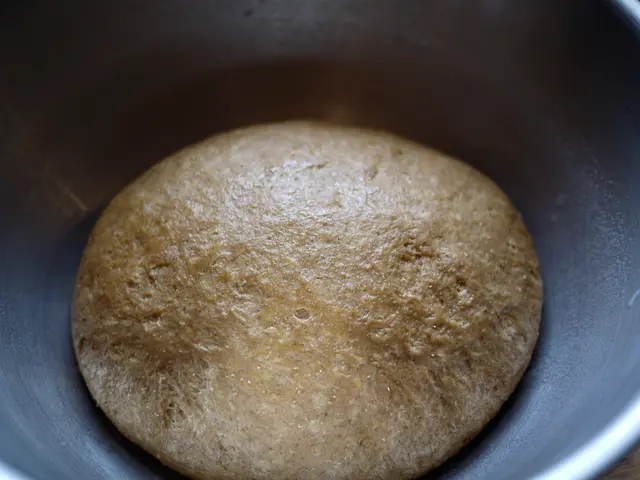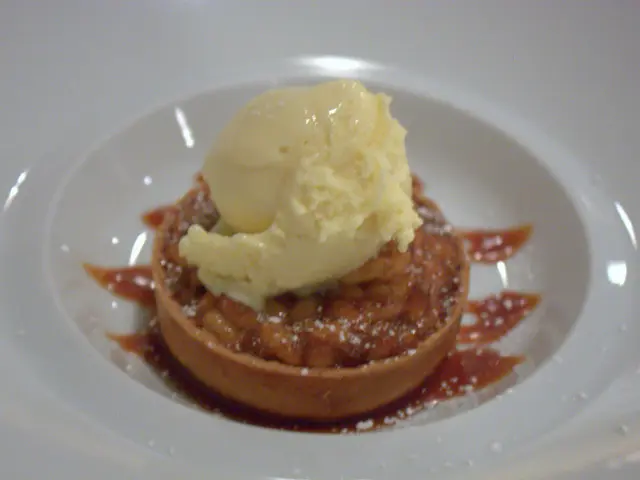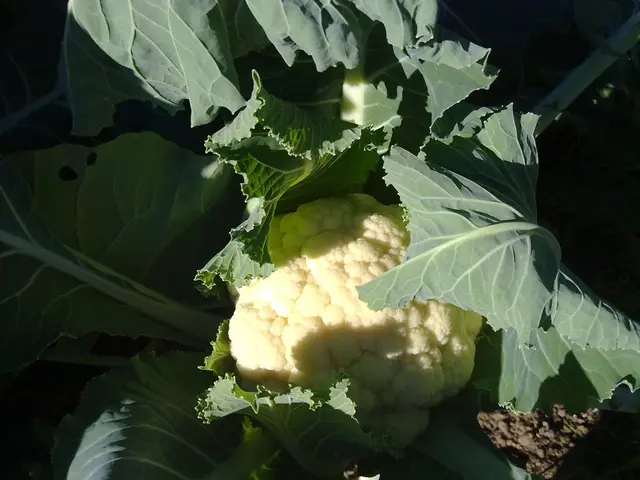Perfectionate Your Boiled Egg Unpeeling: Expert-approved Science Hacks
Method for Removing Shells from Hard-Boiled Eggs
Let's face it, peeling boiled eggs can be a real pain in the behind. But fear not, fellow breakfast enthusiasts! Science teams have been hard at work to crack the code on flawless removals. Here's the deal on how to make your next boiled egg a breeze.
Boiled eggs are a favorite breakfast for many, but let's be real—the peeling process can leave a lot to be desired. No matter how gently you try, the doggone shell sticks to your eggs in the most stubborn way imaginable, leaving half-torn disasters and morning grumpiness in its wake. But fret not, for there's a scientifically-backed collection of tricks to help you enjoy an egg-cellent peeling experience every time.
Egg Anatomy Time Eggs consist of an outer shell, inner and outer membranes, egg white (albumen), yolk, and a surrounding membrane. It's also worth noting that there's an air chamber between the shell and the membrane at the wider end of the egg.
In the 1960s and '70s, extensive research was carried out on the peelability of post-cooking eggs. A study published in 1969 found that the pH of the egg white is the key factor. Ideal pH ranges between 8.7 and 8.9, which is quite alkaline, since it loosens the bond between the egg white and the inner membrane for easier peeling.
Now, fresh eggs have a pH of about 7.6 to 8.0, which might be a disappointment, but don't shed a tear just yet: as the eggs age, the pH increases because the egg shell is permeable and lets gases like carbon dioxide escape. This also leads to a larger air chamber at the wider end of the egg, which means easier peeling.
The Water Test: An Egg-quisite Way to Check Freshness
This air chamber can also help determine the freshness of your eggs—and we're not talking about using divination techniques! To do this, kindly place your egg in a glass or bowl of cold water:
- If the egg is delightfully fresh, it will settle serenely to the bottom because the air chamber is still incredibly small.
- With eggs approximately one week old, the blunt end will float gently up.
- If an egg is approximately two weeks old, it will stand daintily upright in the water. The air bubble is now larger, and the pH is also higher. Don't panic! The egg can usually still be consumed without worry.
- If the egg floats obnoxiously to the surface, you might want to discard it, as it's probably past its prime and should not grace your breakfast table. According to EU regulations, an egg is generally safe to eat for 28 days after laying.
Naturally, you can't always pick and choose the freshness of your breakfast egg. However, nutrition scientist Paulomi Burey from the University of Southern Queensland shares some strategies for peeling boiled eggs—fresh or not.
Science Says: Temperature, Salt, and Vinegar
"Obtain superior results by placing the eggs in rapidly boiling water and then reining in the temperature to a simmer," advises Burey in an article on the science portal "The Conversation". To achieve this, place the eggs in water at room temperature to keep them from cracking due to the sudden temperature change.
According to the expert, escalating the initial temperatures during cooking guarantees that the protein separates from the shell more easily. "The protein can change its structure during cooking more readily and bind together instead of sticking to the membrane," Burey explains. She also recommends immersing the cooked eggs in an ice bath to help the membrane depart from the protein.
Another Ace Up Your Sleeve is adding salt to the boiling water—in Burey's opinion, this helps improve peelability. Salt affects the protein structure in the egg white, making it less rigorously connected to the shell. Additionally, salt can create osmotic effects: when the egg is cooked, it can assist in water entering the egg, enlarging the air chamber and making the shell easier to remove.
Acids and Alkalis Also Make an Appearance in advancing peelability. Therefore, one can try adding baking soda or vinegar to the water. Vinegar, Burey notes, can attack the calcium carbonate in the eggshell, making its removal simpler. Baking soda, on the other hand, may help dissolve the membrane from the shell due to its alkaline properties.
There you have it! By incorporating these evidence-based tactics—focusing mainly on pH manipulation, thoughtful temperature management, and pH modification with vinegar or baking soda—your boiled eggs will peel like a dream.
For Your Reading Pleasure: Key Insights and Practical Recommendations
- Age your eggs for several days at room temperature before boiling, as higher pH levels improve peeling.
- Boil water first, then reduce to a simmer before adding eggs to help prevent overcooking and allow the membrane and shell to separate more easily.
- Add a small amount of vinegar or baking soda to the boiling water to adjust the pH environment and help loosen the shell and membranes.
- After boiling, chill the eggs in cold water or an ice bath to encourage the egg to contract away from the shell and make peeling a breeze.
- Salt addition is optional; some evidence suggests it might enhance texture, but not necessarily improve peelability.
By applying these scientifically supported techniques (particularly focusing on increasing egg white alkalinity, careful temperature control, and pH adjustments with vinegar or baking soda), you can significantly improve the peelability of boiled eggs and spare yourself the morning headache.
The community policy could include guidelines about the safe consumption of healthy diets, focusing on the importance of fresh eggs in nutritious meal plans, such as health-and-wellness or diet plans that promote healthy-diets.
The employment policy might make provisions for nutrition scientists, such as Paulomi Burey, whose research and studies contribute to the advancement of food science, ensuring the betterment of cookware and food preparation approved by science, ultimately contributing to the overall health and wellbeing of the workforce.








